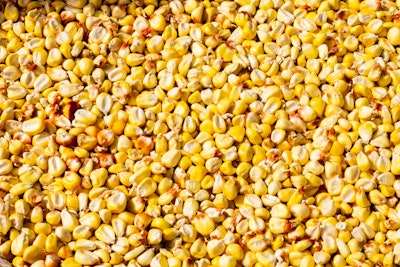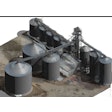
When it comes to grain storage and processing, most operations have systems in place to manage insects — but how often do they stop and ask: “Are we treating the right problem? And are we measuring the full cost of not treating it at all?”
In a recent interview with Johnny Wilson, technical services manager for Central Life Sciences, he explained just how much is at stake with insect infestations in grain, and how easy it is to underestimate the impact.
Wilson revealed some compelling insights from ongoing grain shrink trials being conducted in partnership with the USDA, measuring the percentage of grain loss over time when insects are left untreated.
He said that in just three months, grain exposed to pests like corn and rice weevils, or lesser grain borers, can experience up to 3% shrinkage. While that figure may not sound like much, when you consider how many operations move tens or hundreds of thousands of bushels, the losses quickly become substantial. A 3% shrink on 100,000 bushels of corn, for example, means 3,000 bushels will disappear, as well as the revenue.
Furthermore, Wilson said this damage occurs before many operators even realize there’s a problem.
“By the time you see insects, a lot of the damage has already happened,” he said. “Certainly we can go in after the fact and fumigate, but if we can prevent that infestation from ever coming in in the first place, we've just saved ourselves all of the headache and all of the losses that we would have incurred.”
Not all bugs are equal: Why identification matters
It’s easy to think of insects as one broad category of “pests,” but identification is critical when it comes to effective treatment.
“Different insects reproduce and migrate at completely different rates,” Wilson said. “A rice weevil behaves very differently from a red flour beetle or a lesser grain borer.”
Identification matters for two reasons:
- Infestation timing – Some insects reproduce quickly and can explode in population in just weeks. Others might be slower but harder to spot.
- Treatment Strategy – The active ingredients or application methods needed to effectively control one insect might be totally ineffective against another.
In other words, a one-size-fits-all solution for grain bins is not efficient, and could be a waste of time, labor and money.
Prevention beats reaction
One of the key takeaways from Wilson’s advice was the value of insect infestation prevention. While reactive measures like fumigation are often necessary, they rarely undo the damage already caused.
“We want to shift the mindset from reactionary to forward-thinking,” Wilson said. “Because when you understand what you’re up against, and what it’s costing you, you can make smarter decisions earlier.”
And those decisions can have a huge impact: higher yield retention, better quality grain, less waste and fewer processing issues down the line.
Insects might seem like a small problem, but left unchecked, they become a serious and costly one. The ongoing USDA grain shrink trials are bringing additional useful data to the table, and it’s important to turn that data into action.
Whether managing a local co-op or a massive grain operation, managers should ask themselves:
- Do I know what insects I’m fighting?
- Am I doing enough to stop them before they cause damage?
- Am I measuring the cost of doing nothing?
If the answer to any of those questions is “I’m not sure,” it might be time to dig a little deeper.











